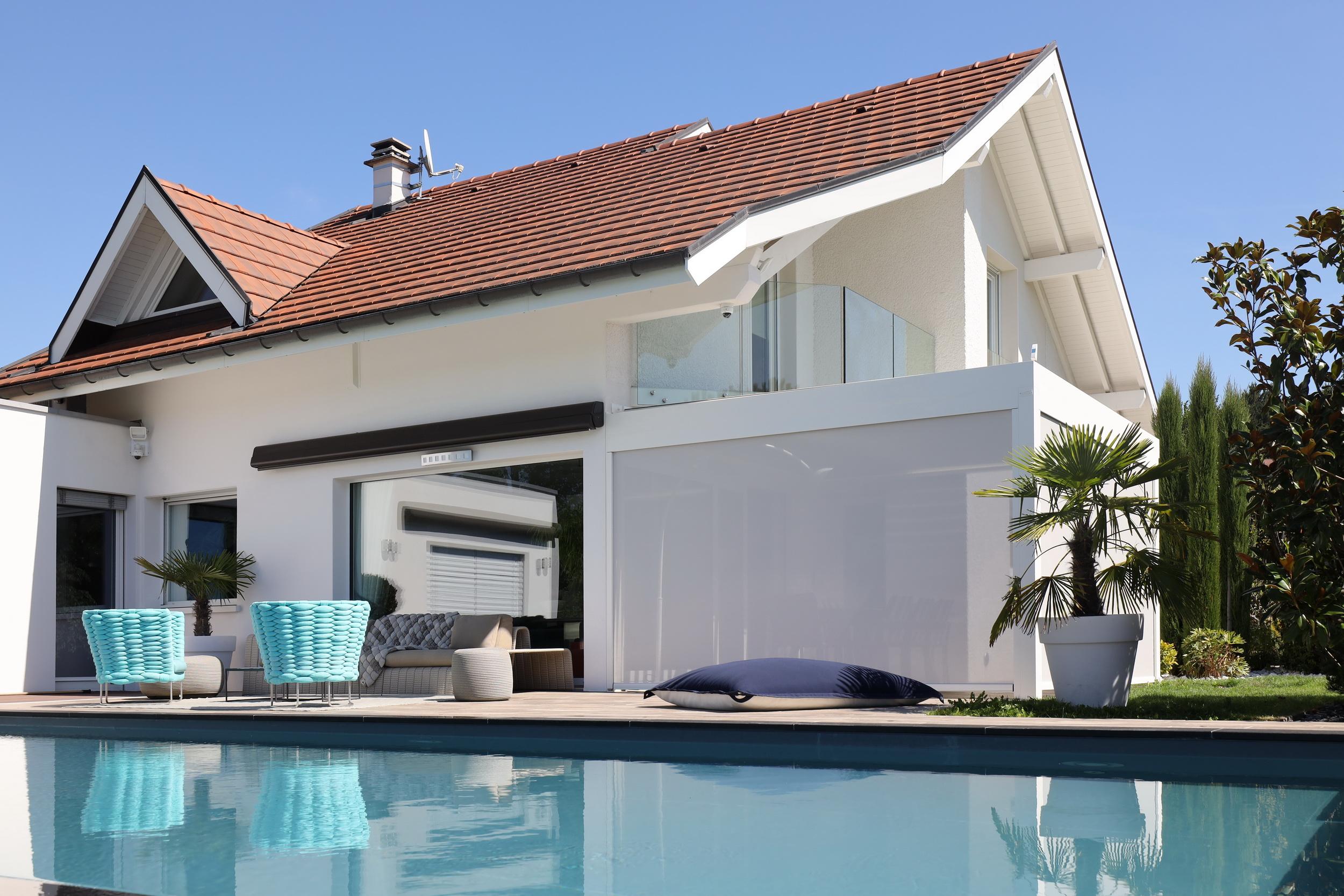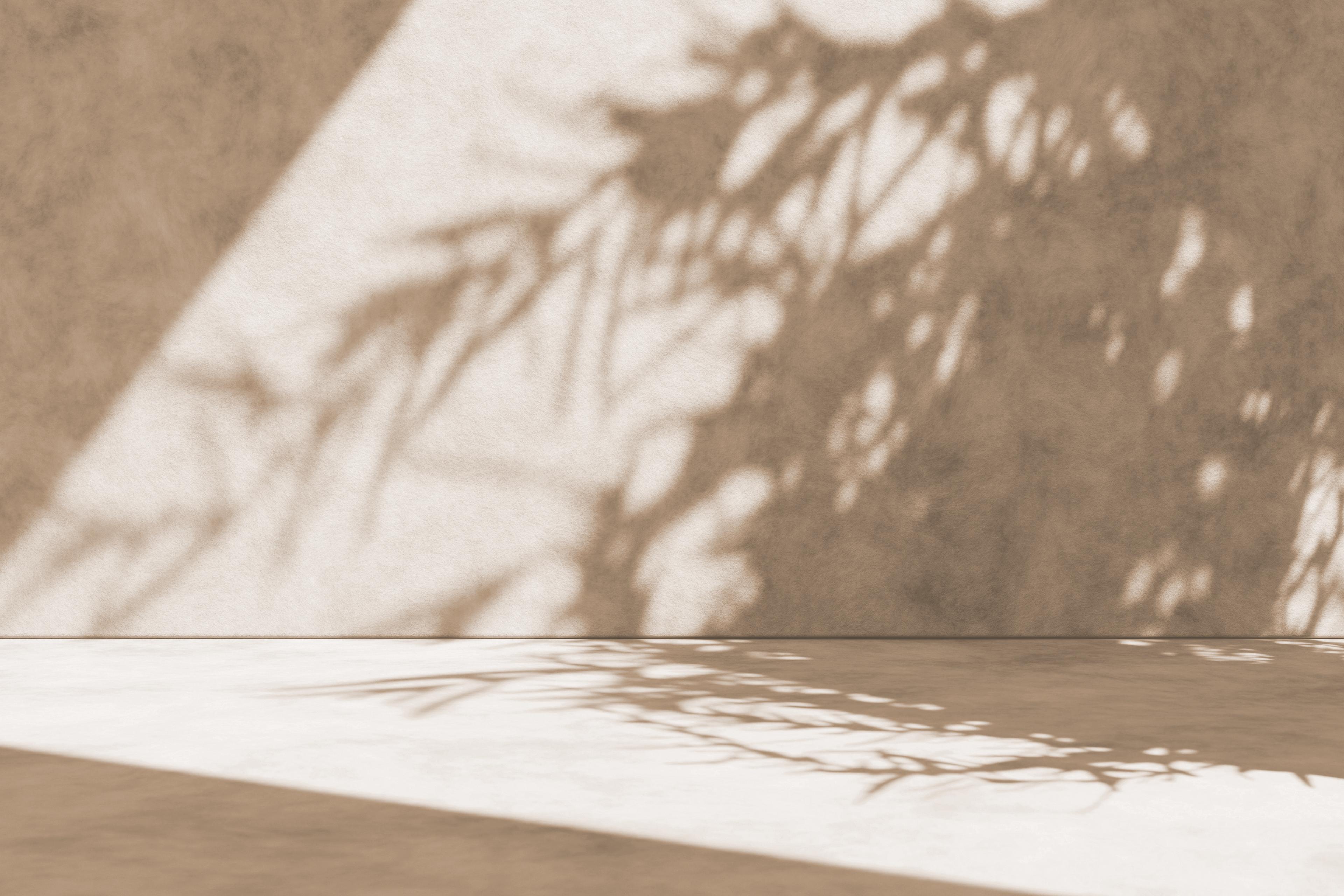What do you need to do before installing your pergola?
Determining the location
Finding the perfect location for your pergola depends on several key factors:
The orientation of the pergola to benefit from the sun and avoid prevailing winds;
Topography of the site, with its slopes and natural obstacles;
Accessibility from the house;
Privacy, taking into account the surrounding neighborhood and views.
Taking the time to assess all these factors helps you design a pergola that's tailored to your needs and preferences.
Choosing a lean-to or freestanding pergola
A lean-to bioclimatic pergola creates additional living space in your home. Attached to an exterior wall, it regulates the temperature of the adjoining room, helping to save energy.
Want a structure independent of your home? Choose a freestanding pergola. The aluminum structure and roof rest on four load-bearing pillars. Set apart from your home, it allows you to design a distinct and decorative space.
Defining the building material
The two most common materials used to build a pergola are aluminum and wood.
Aluminum is highly resistant to corrosion and the elements. It's the ideal material for keeping a pergola in good condition over the long term. Aluminum can be shaped to different dimensions, adapting to most outdoor surfaces.
Wood brings a warm, natural look to your garden or terrace. It can also be cut to create unique designs. However, it requires more maintenance. Regular special treatment is required to keep pests at bay.
Selecting a roof type
Choosing the right type of roof for your future pergola is essential for a stylish, functional terrace. There are two preferred configurations:
Adjustable slats for precise adjustment of the amount of light and shade under your shelter;
Retractable canvas to protect your terrace from the vagaries of the weather, thanks to a tough, waterproof fabric.
Taking care of the administrative formalities
Before building a pergola on your terrace, we strongly advise you to contact your local council. Depending on the surface area of your pergola, you'll need to obtain prior authorization or apply for a building permit. You should also check your local town planning regulations to avoid any disputes at a later date.
Installation
The installation of a pergola must be carried out with the greatest possible care. Only careful installation will ensure that your pergola looks good, lasts long and is easy to use. A team of professional technicians will carry out the installation if you have chosen this solution. Otherwise, you can install your bioclimatic pergola yourself.
Installation involves preparing and assembling the pergola's supporting structure, installing the motor and fitting the adjustable slats to the pergola. Next comes the electrical connection, starting up the motor, programming the remote control, setting the parameters of the integrated weather station and finally the finishing touches. It takes an estimated 48 hours to fit and install your bioclimatic terrace.
After this stage, your pergola is ready to use. You can use it as a shelter from the sun and bad weather. You'll be more comfortable in your garden and can enjoy it to the full, whatever the weather and whatever the season.

The other installation steps
A pergola can't be installed overnight. There are several steps to follow before installation. Biossun explains how they work:
Diagnosis of your pergola: this stage involves determining your needs and expectations to help you choose the best possible pergola model. The choice of pergola has a considerable impact on the success of your project. You can choose a lean-to or freestanding model, with a canvas roof, adjustable slats, LED lighting, electrical outlets... We can adapt to all your needs and desires.
Technical study: this enables us to ensure that the pergola can be installed on your plot of land. The strength of your facade, the dimensions of your terrace and the nature of your soil are all examined to determine the feasibility of your project. The technicians also determine the perfect location and best orientation for your outdoor installation.
Receiving your pergola: your pergola is delivered to you. You'll need to check that the packages are complete and in good condition. You can then install your structure yourself, or delegate installation to professionals.
What assistance is available for installing a pergola?
Installing a pergola does not entitle you to financial assistance. The latter do not meet the conditions for eligibility. So don't count on any amount to reduce the cost of your work. State aid is available for energy renovation work. MaPrimeRénov, for example, covers all work to improve a home's thermal performance. That's not the purpose of a pergola, even if the models leaning against the facade improve thermal comfort in your home by protecting you from the sun's rays. Nor is reduced-rate VAT available for the installation of bioclimatic pergolas. Pergolas are considered to be extensions of the house, like arbours, gazebos or garden sheds. Verandas are a different matter, as they can be insulated to create an extra room in your home.
You've got it: installing a pergola isn't complex, but it is technical. We recommend that you go to a professional to have your bioclimatic pergola installed. This system needs to be perfectly installed to give you a comfortable and functional new outdoor space. Biossun works with serious, qualified technicians, so we can offer you long-lasting, aesthetically pleasing pergola installations. Would you like to make a real investment and enjoy greater comfort in your garden? Browse our catalogue to discover all our professional-quality pergolas. With a canvas roof or adjustable slats, the choice is yours. There are different types of pergola and many customisable models. Choose according to your needs and how you want to use your shelter. Our pergolas can be fitted with a wide range of options.

